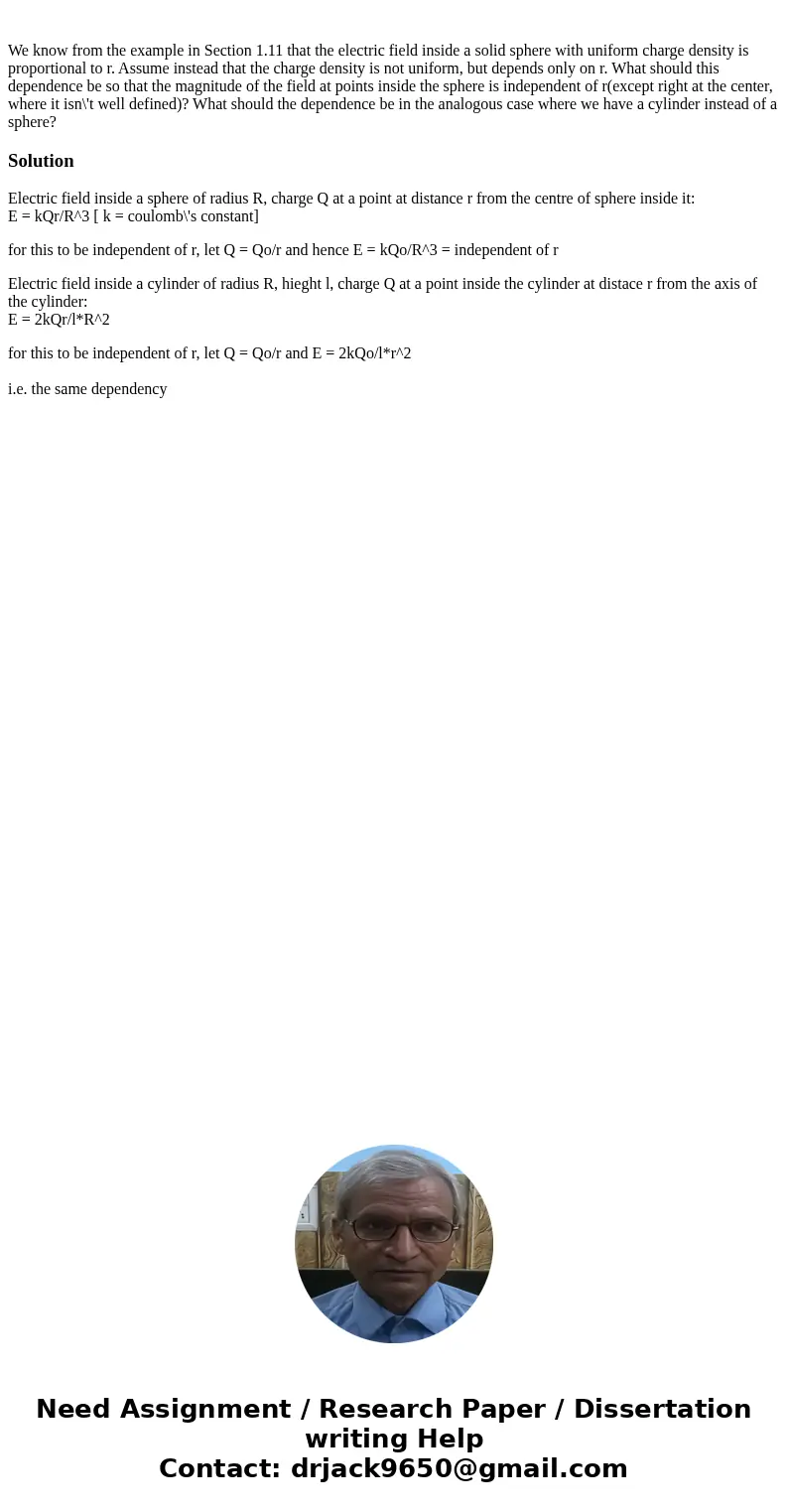We know from the example in Section 111 that the electric fi
Solution
Electric field inside a sphere of radius R, charge Q at a point at distance r from the centre of sphere inside it:
E = kQr/R^3 [ k = coulomb\'s constant]
for this to be independent of r, let Q = Qo/r and hence E = kQo/R^3 = independent of r
Electric field inside a cylinder of radius R, hieght l, charge Q at a point inside the cylinder at distace r from the axis of the cylinder:
E = 2kQr/l*R^2
for this to be independent of r, let Q = Qo/r and E = 2kQo/l*r^2
i.e. the same dependency

 Homework Sourse
Homework Sourse